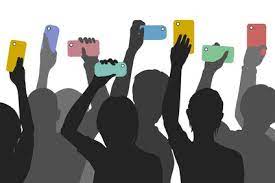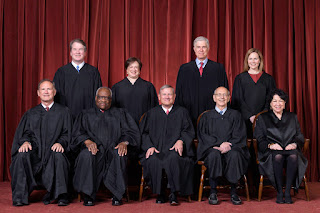Monday, November 22, 2021
Blog #10 EOTO 2 Classmate Prez
Blog #9 EOTO 2 KEY POST
Agenda Setting
The “ability to influence the importance placed on the topics of the public agenda.”
The way the media attempts to influence viewers, and establish a hierarchy of news prevalence.
How Agenda Setting Theory Effects Society as a Whole
The Good and the Bad
Media Today Separates the People
Blog #6 EOTO Classmate Prez
What I learned
Here’s what I gathered…
Telegraph -> Radio -> Bluetooth
1800’s 1920’s 1999


Blog #5 ANTIWAR.COM
Dissent:
The expression or holding of opinions at variance with those previously, commonly, or officially held.
Tuesday, November 16, 2021
Blog #4 EOTO KEY POST
Emoticons And Emojis.
Are they the same thing?
 Vs.
Vs. 
Wednesday, November 10, 2021
Blog #3 KEY POST
8 Values of Free Expression
2. Participation in Self-Government
It has been suggested that citizens will not make wise and informed choices in elections if candidates and proponents of certain policies are restricted in their ability to communicate positions. We want an informed electorate involved in debate.
Wow. Is this not so true and prevalent, not only today, but in the past couple years during the last presidential election? This suggestion, that citizens will not make wise electoral decisions if their media is sifted through, is not only common sense, but plain fact. How is one going to decide what to have for their main course at a restaurant if half of the menu is hidden behind closed doors? While this analogy may seem inapplicable to elections, that is not the case in the world of spreading mass communication through social media. President Trump has been censored on a number of occasions by platforms that are very critical to the campaigning process, and also as a means to reach American citizens quickly and directly. This overreach is done by a private entity however, and “state action doctrine” states that a company not affiliated with the government is exempt from First Amendment violations. I still think it is totally relavent to this theory of participation in Self-Government because President Trump was not allowed fair access in communicating to citizens his policies and ideas. This is all to the fault of Twitter. Much more research can be done on how Donald Trump’s voice was dismissed here. As a man of solutions, he is in the process of creating his own Free Speech platform. This sight will not feature the corporate bullying and censorship that Twitter does simply because the one entity disagrees with another. I look forward to the former president’s sight launching
3. Stable Change
It has been suggested that a society in which angry and alienated citizens are allowed to speak their mind, or "vent," will be more stable, as people will be less likely to resort to violence. It has also been pointed out that allowing the alienated and discontented to speak freely enables government to better monitor potentially dangerous groups who would otherwise act more clandestinely. Ultimately, it is in the governments own self-interest to allow such venting.
The phrase from this paragraph I want to highlight, “It is in the governments best interest to allow such venting.” This is an idea that will foreshadow a later discussion below. I want to write a conjoined thought provoking passage that includes this theory, “Subtle Change,” and the later theory, “Protect Dissent.” The two are incredibly similar, and something I find myself being passionate about. I will write the following thoughts below, under theory “8.”
6. Promote Tolerance
It has been argued that freedom of speech, especially through our practice of extending protection to speech that we find hateful or personally upsetting, teaches us to become more tolerant in other aspects of life — and that a more tolerant society is a better society. Somewhat counter-intuitive, the First Amendment protects hate speech because society learns valuable lessons from, including why it is hateful and worthy of condemnation. It’s how we spread norms about acceptable behavior.
This theory could be discussed in a multi page blog, and I may just do that on a later date. The topic I’d like to apply this to today is the topic of “cancel culture.” What an insanely radical opposition to the First Amendment this is. While I agree to the belief that statements from celebrities (and citizens alike) should take some responsibility and consequences for what they say in certain situations, I do think it has gotten out of hand. People today are so quick to become offended and, in turn, send hate wherever they were “hurt.” These people, or keyboard warriors, are so thin skinned that they want YOU to change what YOU say, to protect their feelings. What a joke.
I’d like to add a personal note, relating my stance on bullying to tolerance. Bullying is a good thing. The lessons people can learn growing up with bullying teaches them to have thick skin, and helps them to learn character. I can speak to this, growing up with two older brothers, and being picked on quite harshly in middle school, I learned to take things from people I do not respect with a grain of salt. The only people that could really hurt me, are those dearest to me. Those people, whom I surround myself, are of the character that makes me happy. Bullying made me turn out so much better. The kids that used to bully me are absolute losers now, who peaked so early, they make me feel so glad I wasn’t the in their shoes. Maybe they’d be in a better situation had they taken some shit growing up. It’s interesting though, because now that I am in a position that could absolutely roast them and hurt them, I don’t do it because that wouldn’t make me feel any better. I want to quote Frank Gallagher, from the TV series “Shameless.” “Bullying is a vital part of every ecosystem, it teaches kids resilience. The world is a rough place, bullying is like getting inoculated. It’s a vaccine…… How do you think Steve Jobs turned out so great? Bullies!”
Cancel culture helps no one, and teaches kids the wrong answer. The answer is to not change others to make yourself feel better. It’s impossible to control outer forces, one has to learn to accept things on their end, to be okay at the end of the day. Allowing freedom of all speech, including hate speech, has it’s important function in society, teaching kids to cope with the world, as it REALLY is.















